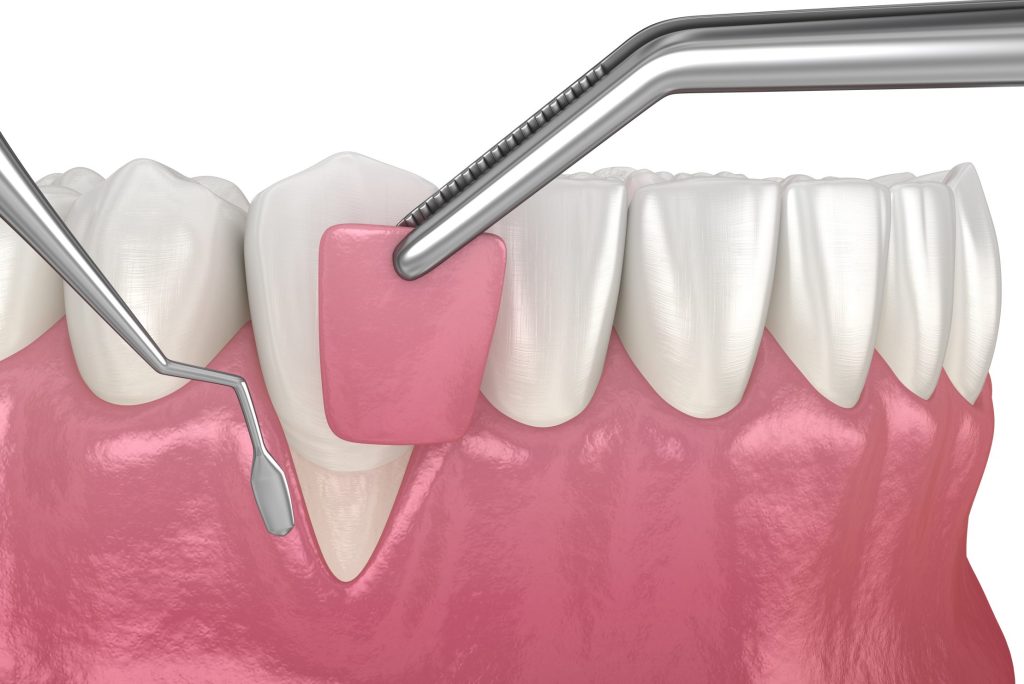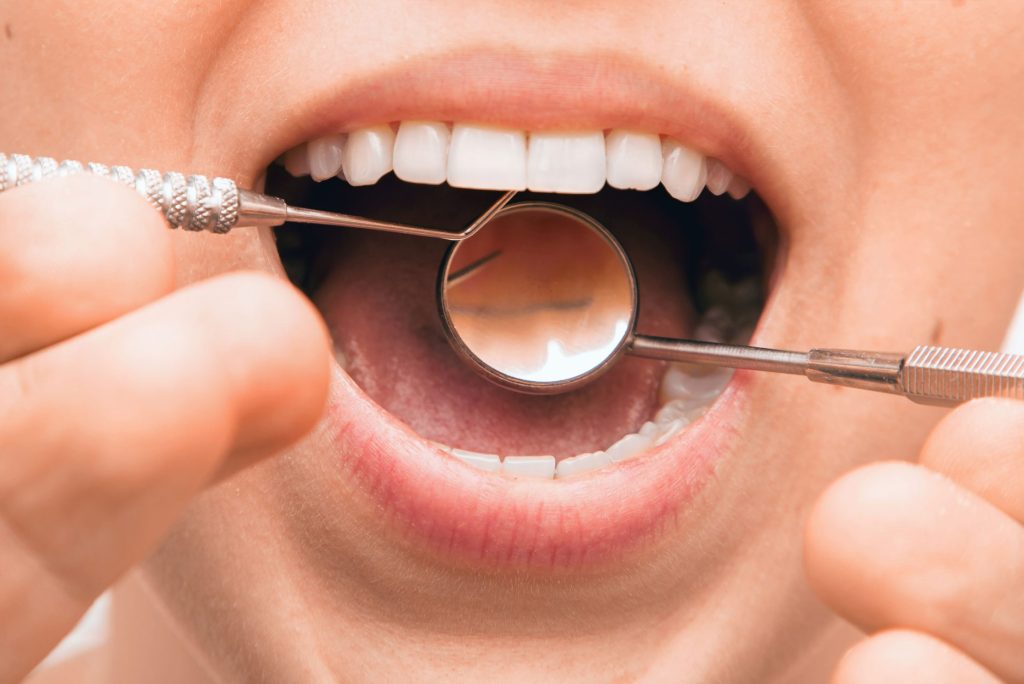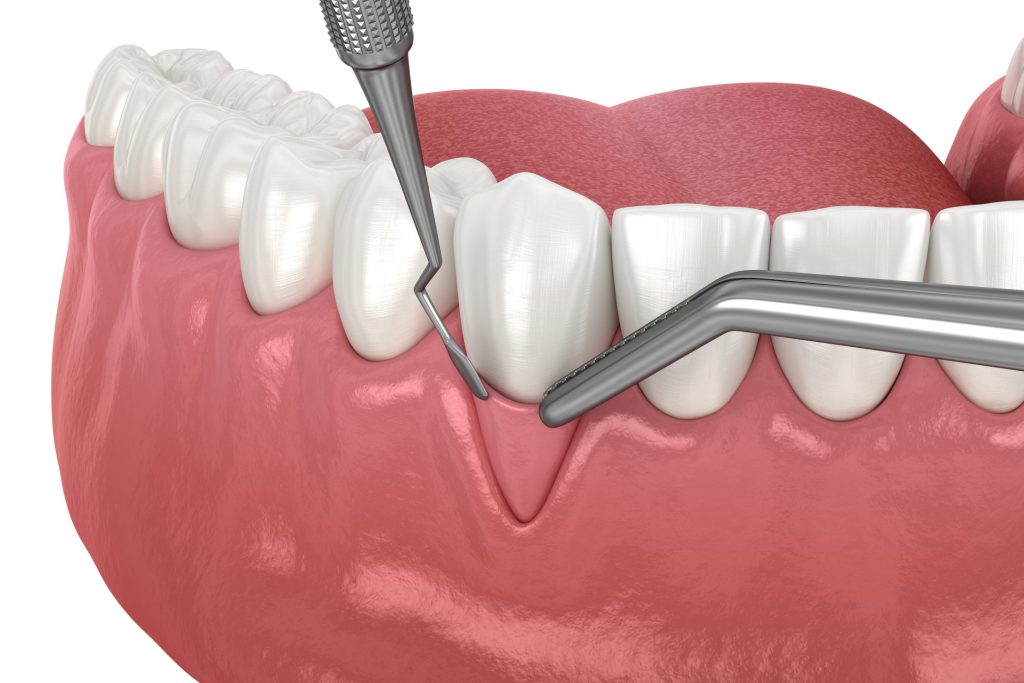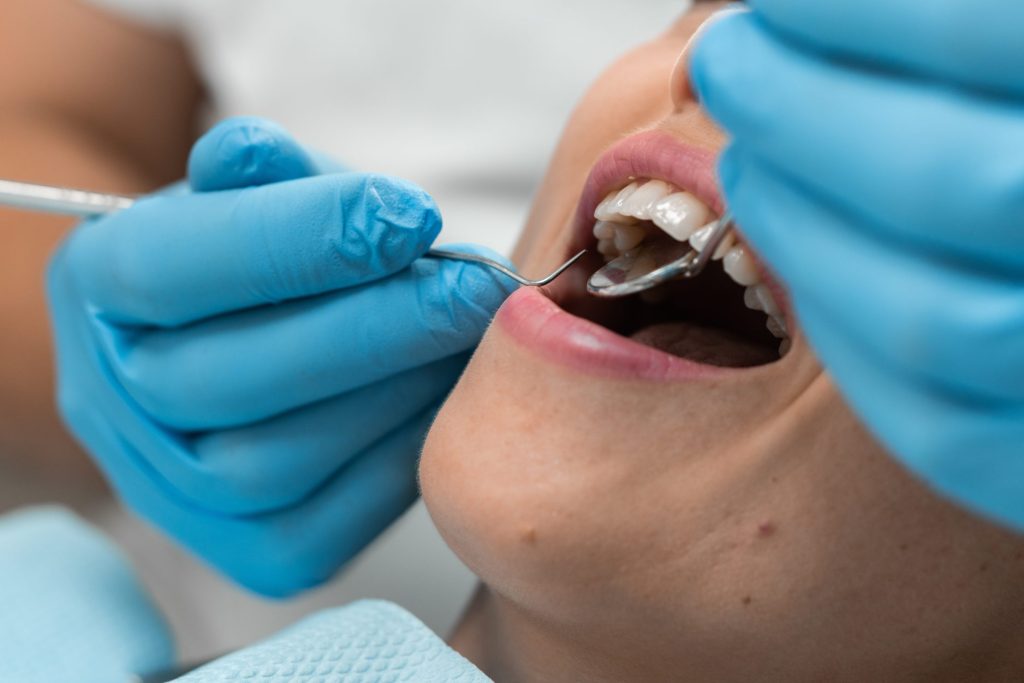Gum Grafting
Expert Gum Grafting Services in Worthington
At Worthington Periodontal Specialists in Worthington, OH, we understand the importance of healthy gum tissue for your overall oral health. Gum recession, a common dental issue, can significantly impact your smile’s appearance and increase the risk of tooth sensitivity and even tooth loss. Dr. TJ Miller offers expert gum grafting procedures designed to restore your gum health, protect your teeth, and enhance your smile’s beauty.
What is Gum Grafting?
Gum grafting is a periodontal surgery that involves transplanting gum tissue to areas affected by gum recession or periodontal disease. This procedure helps protect the roots of your teeth, reduce tooth sensitivity, and enhance your smile’s aesthetics.
During a gum graft, a small piece of tissue is taken from the roof of your mouth or a tissue bank and placed over the affected area. Over time, this grafted tissue integrates with your natural gum line, strengthening and restoring healthy gum tissue.
Types of Gum Grafting
Gum grafting can be customized based on your specific needs.
Our experienced periodontist will recommend the best type of gum graft based on your specific needs and the extent of your gum recession.The main types of gum tissue grafts include:

Connective Tissue Graft
A flap of skin is taken from the roof of the mouth, and connective tissue is used to cover exposed roots.

Free Gingival Graft
A small piece of tissue is removed from the roof of your mouth and placed in areas with thin gums to reinforce them.

Pedicle Graft
Uses plenty of gum tissue from a nearby area, pulling it over the affected site while keeping it attached to its blood supply.

Tissue Bank Graft
Uses donated graft tissue, eliminating the need to take tissue from the patient’s roof of the mouth.
How You Benefit From Gum Surgery
Gum surgery, specifically gum grafting, offers numerous benefits for oral health and overall well-being. By addressing gum recession, gum grafting helps to protect the exposed tooth root from further damage, reducing sensitivity and discomfort, especially when consuming hot or cold foods and beverages.
Moreover, restoring the gum line to its natural position prevents bone loss in the jaw, which, if left untreated, can ultimately lead to tooth loss. With proper healing, your new, healthy gum tissue will provide a stable foundation for your teeth and enhance the appearance of your smile.
Understanding the Gum Grafting Surgery Procedure
At Worthington Periodontal Specialists, we ensure a smooth and comfortable gum graft surgery experience with the latest techniques in periodontal care:
- Dr. Miller administers local anesthesia to numb the graft site and surrounding areas.
- A flap of skin may be created on the roof of your mouth to obtain graft tissue or a tissue bank may be used.
- The grafted tissue is placed over the exposed root or thin gums.
- Sutures or a periodontal dressing help secure the graft in place.
The healing process begins as the grafted tissue integrates with your natural gum line.
Post-Surgery Care
After your gum grafting procedure, our team will provide you with detailed post-surgery aftercare instructions. Following these guidelines is essential for promoting proper healing, minimizing discomfort, and ensuring the long-term success of your gum graft surgery.
- Stick to cold foods and soft foods to avoid irritation.
- Take pain medication or over-the-counter pain medication as recommended.
- Avoid smoking, as it can slow the healing process.
- Follow a good oral hygiene routine, being careful around the graft site.
- Use prescribed mouthwash to reduce the risk of infection.
Why Choose Worthington Periodontal Specialists for Your Gum Graft?
We take pride in offering exceptional gum grafting services tailored to meet each patient’s needs. Our highly skilled team understands gum disease and its effects on oral health.
We prioritize patient education and strive to create a comfortable and supportive environment throughout your treatment journey. If you’re seeking a gum specialist who can provide exceptional care and lasting results, look no further than Dr. Miller at Worthington Periodontal Specialists. We are committed to helping you achieve and maintain optimal oral health.
Restore Your Gum Health with Expert Care
Gum grafting may be the solution for gum recession, tooth sensitivity, or concerns about the effects of gum disease. At Worthington Periodontal Specialists, our experienced gum specialists provide personalized treatment to restore and protect your oral health. Contact our Worthington office at 614-885-5525 to schedule a consultation and explore your treatment options.
